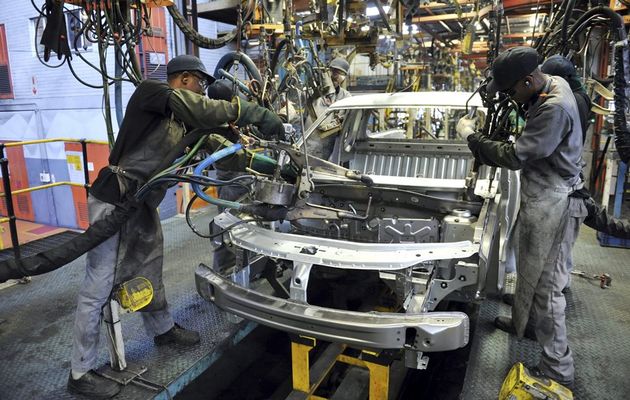- Manufacturers to Prepare Industrial Plan for Government
Spurred on by the advice of the President of Dangote Group, Alhaji Aliko Dangote, manufacturers are nursing plans to create and document a sustainable industrial plan that will guide successive governments in their policy decisions regarding the real sector.
Dangote had suggested this during the 2018 edition of the Manufacturing and Equipment Expo, which was held in Lagos from March 14 to March 16 under the theme ‘Enhancing Nigeria’s Manufacturing Competitiveness in the Global Space’.
Dangote, whose address at the forum was read by the Chief Strategy Officer, Dangote Group, Mr. Aliyu Suleiman, advised the Manufacturers Association of Nigeria to convene a process where members could develop a detailed plan on what should be done to solve infrastructural and other problems in the sector.
“The plan should be specific so that when a government comes, they know exactly what they need to do and we can track them to know exactly when they are going to do it.”
According to him, why the manufacturing sector needs to drive an industrial strategy for the economy is because in Nigeria, the sector is important in ensuring economic resilience and stability especially as the government is diversifying from oil to non-oil revenue base.
Countries such as the United Kingdom, he said, were still thinking of ways to move ahead and be more competitive in manufacturing, adding that Nigeria where manufacturing contributed only nine per cent to the Gross Domestic Product should do more in this regard.
He anchored his advice on the fact that challenges of the sector and solutions proffered for them dated as far back as the 70s, adding that nothing had changed because the government was left to create strategy for the sector.
He said, “The disadvantage of that is that whenever there is a new government, the government spends half of its time coming up with a plan and by the time it has finished coming up with the plan, it is election time and people lose focus.
“We need an industrial strategy that belongs to Nigerians; that does not belong to any government; it belongs to Nigerians, irrespective of the party, so that whenever a new government comes, we go to the government and present the plan and tell them what the last government did and where they are expected to continue from. It is important that the plan is the one that everybody buys into.”
Responding, The President, MAN, Dr. Frank Jacob, commended Dangote for the advice, adding that it would be heeded to the letter.
He said that the MAN equipment expo had become a forum for articulating the road map for manufacturing development in Nigeria.
He said, “MAN through this annual international event has taken the challenge of leading the sector to play a key role in the renewed quest for our nation to become one of the leading industrialised economies in the world.
“The NIRAM and NME expo affords several companies and countries the opportunity of exposure to the entire manufacturing value chain, which includes equipment, raw materials, financial support and professional consultancy.”
The Director-General, MAN, Eastern Zone, Ekama Akpan, who spoke on the sidelines of the event, said that there was a need to act on the advice of Dangote and design an industrial strategy that could guide the government in drawing up policies for the sector.
Vice-President Yemi Osinbajo, who was represented by his Personal Assistant on Commerce, Industry, Trade and Investment, Dr. Olajumoke Oduwole, said that the manufacturing sector had been pivotal to most of the policies designed by the present administration, adding that consistent dialogue or meetings with stakeholders in the sector had resulted in very fruitful outcomes.
He observed that the manufacturing sector’s growth had started picking up, adding that the sector recorded a nominal growth of 9.2 per cent in the third quarter of 2017.
In his welcome address, the Commercial Director, Clarion Events West Africa, Russel Hughes, said, “We look forward to a positive discourse on the development of the manufacturing sector in this region.”


 Forex4 weeks ago
Forex4 weeks ago
 Naira3 weeks ago
Naira3 weeks ago
 Billionaire Watch3 weeks ago
Billionaire Watch3 weeks ago




 Naira3 weeks ago
Naira3 weeks ago








 Naira3 weeks ago
Naira3 weeks ago


 Naira2 weeks ago
Naira2 weeks ago








 Naira2 weeks ago
Naira2 weeks ago








 Naira4 weeks ago
Naira4 weeks ago























